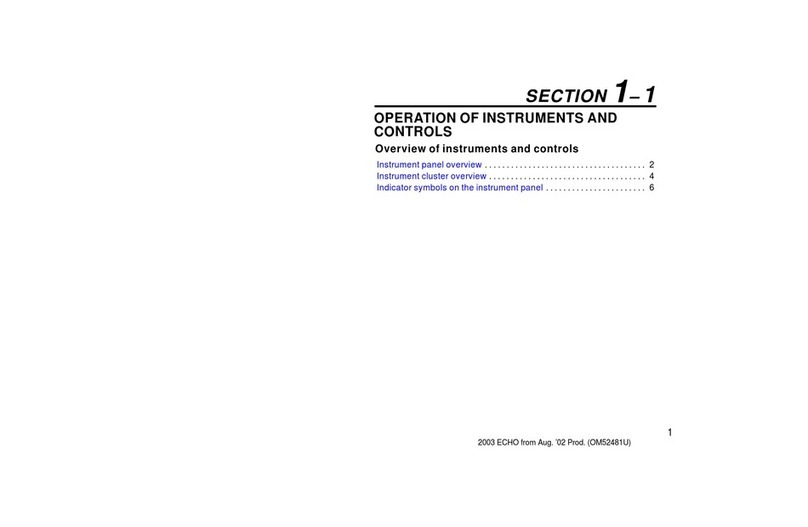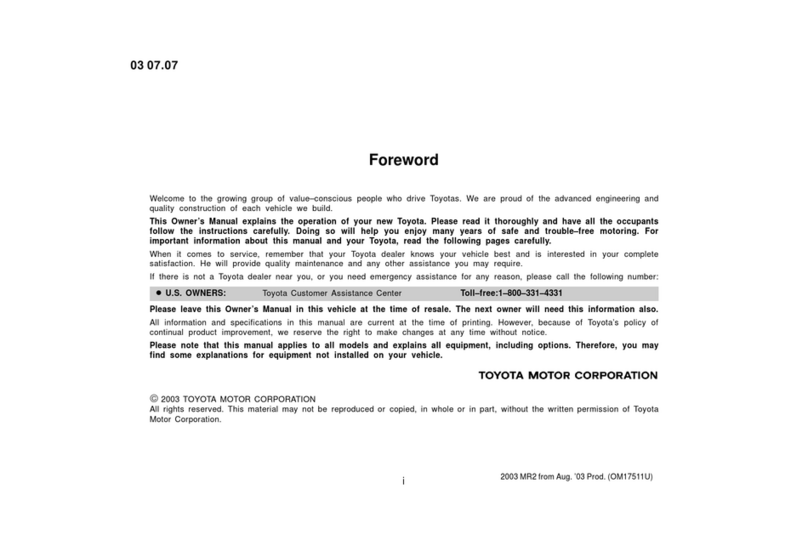iii
Table of Contents
About the RAV4 EV .....................................................................................................................................1
RAV4 EV Identification ...............................................................................................................................2
Exterior .........................................................................................................................................................3
Interior...........................................................................................................................................................4
Motor Compartment......................................................................................................................................5
Electric Vehicle Component Locations & Descriptions.............................................................................6
Specifications................................................................................................................................................7
Electric Vehicle Operation...........................................................................................................................8
Vehicle Operation..........................................................................................................................................8
Electric Vehicle (EV) Battery Assembly and Auxiliary Battery ...............................................................9
EV Battery Assembly ....................................................................................................................................9
Components Powered by the EV Battery Assembly .....................................................................................9
EV Battery Assembly Recovery ..................................................................................................................10
Auxiliary Battery..........................................................................................................................................10
High Voltage Safety ....................................................................................................................................11
High Voltage Safety System........................................................................................................................11
Service Plug Grip........................................................................................................................................12
Precaution to be observed when dismantling the vehicle........................................................................13
Necessary Items.........................................................................................................................................13
Spills.............................................................................................................................................................14
Dismantling the vehicle..............................................................................................................................15
Removal of EV Battery Assembly .............................................................................................................20
HV Battery Caution Label.........................................................................................................................28



















































